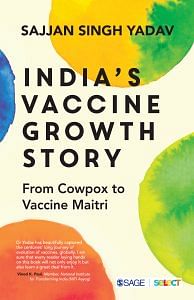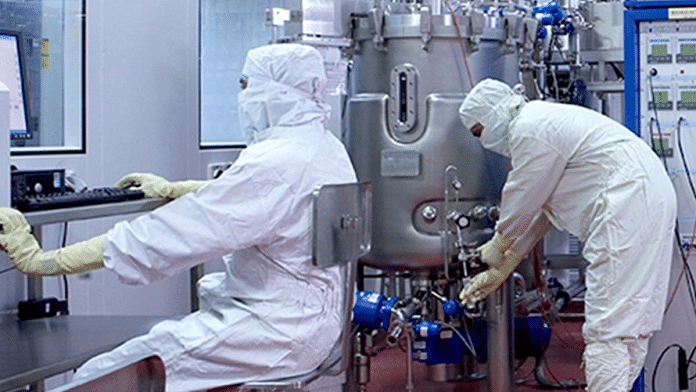India’s vaccine industry has been on a roller-coaster ride since the advent of vaccines. Beginning with a heavy dependence on import of vaccines, it graduated to sufficient indigenous production. After a few decades of import, entrepreneurs in the country made themselves not only self-reliant but also produced surplus vaccines for export worldwide. Do you know who was the first vaccine producer in India?
Children, the first vaccine producers
The first vaccine in India was produced by a three-year old girl named Anna Dusthall. She was vaccinated with cowpox vaccine, which had arrived from Baghdad, along with 19 other children. While others failed to produce pox blisters, Dusthall did not disappoint. Fluid was harvested from her pustules, five children were inoculated and the remaining material was filled in vials. The children and the vials were dispatched to different parts of the country. Initially, the smallpox vaccine was produced by inoculating children.
Fluid was extracted from their blisters to vaccinate others. Children often accompanied vaccinators on vaccine-related expeditions. The process was painful, unethical, unsustainable and prone to the transmission of diseases such as syphilis and hepatitis. Moreover, the parents often opposed experiments on their children. However, the children continued to shoulder the global vaccine production burden for a century. Finally, the practice of arm-to-arm vaccination was stopped in 1890.
Who produced vaccines after that?
Role of cows, buffaloes and goats as vaccine producers
Slowly, cows replaced children as vaccine producers. The process was the same. The animals were injected with cowpox or smallpox matter; fluid was collected from the resultant pustules and used to inoculate people.
Bombay Presidency took the lead. In 1869, Dr Henri Jules Blanc, Deputy Surgeon in the Bombay Medical Department, brought back vaccines from Belgium and trained local people to inoculate calves. Madras Presidency adopted the process 10 years later.
In view of the Hindus’ religious sentiments towards cows, other animals such as buffaloes, goats and donkeys were also used for the production of the smallpox vaccine. Inoculated animals from depots were taken on vaccine-related trips to villages. Excess fluid from pustules was collected in capillary tubes and sent to distant places for vaccination purposes.
Later, institutes for smallpox vaccine production from animals were set up in each province. However, till 1850, the production was insufficient to cater to the demand, which led to imports.
Vaccines would lose their potency in hot weather. Therefore, research started on preserving the quality of vaccines. The first preservative, glycerine, was discovered in 1895. Other additives such as lanoline, vaseline and boric acid were also tried.
As the world got a better grip on the smallpox ‘demon’, scientists focused on other pathogens. But, the arsenal had to be produced differently.
Also read: Indian pharma firm expands NZ plant to meet demand for bovine serum, key vaccine ingredient
Public institutes usher in the era of lab-grown vaccines
The British rulers of India were concerned about the mounting deaths of their personnel from tropical diseases. The main scourges were plague, leprosy, cholera and malaria.
Moreover, sending soldiers bitten by rabid dogs for treatment to the Pasteur Institute in Paris was burdening the exchequer. Therefore, they decided to set up a series of bacteriological laboratories and Pasteur Institutes across India.
It began in 1881 when the British equipped a small laboratory in Calcutta for cholera research. A bacteriological laboratory was established at Kasauli in 1884 and Agra in 1892. The first Pasteur Institute in India was established in Kasauli in 1900. Subsequently, Pasteur institutes came up at Coonoor, Shillong and Rangoon.
Production techniques were simple. Pathogens are attenuated by heating, passing through animals or mixing with other materials. And although there was a compromise on their safety and standardization, the vaccines were successful in reducing mortality.
By 1930, there were 15 vaccine institutes in India. Let’s acquaint ourselves with some of these organizations.
Governor’s house becomes first vaccine institute
In 1896, when the plague epidemic broke out in Bombay and Poona, the Governor of Bombay requested Dr W. M. Haffkine to develop a vaccine. He was provided two rooms in the campus of the J. J. Group of Hospitals to set up a laboratory. One clerk and three peons were lent to him by the Bombay municipality.
Once the vaccine was tested successfully, more space was needed for its production. Lord Sandhurst, the Governor of Bombay, offered Haffkine a mansion, which had been the Governor’s house until a few years ago. This became the Plague Research Laboratory on 10 August 1899. Later, it started production of the cholera vaccine and was named the Bombay Bacteriological Laboratory in 1905. In 1925, it was renamed the Haffkine Institute. In due course, the institute started production of DPT and rabies vaccines as well as OPV and anti-tetanus and anti-snake venom serum. It became one of the public sector institutes selected by the Government of India for technology transfer to produce COVID-19 vaccine when the pandemic engulfed the world in 2020.
Also read: How ICAR grew 50 generations of virus over 1.5 years to develop lumpy skin disease vaccine
Lady Lily’s death leads to establishment of many institutes
In 1902, an English lady called Lily Pakenham Walsh died of rabies. She could not get anti-rabies treatment in time. Moved by her death, an American philanthropist, Henry Phipps, donated `50 lakh to the Viceroy of India to develop medical institutions. Of this amount, 1 lakh was allocated for setting up the Pasteur Institute of Southern India at Coonoor. The institute started functioning on 6 April 1907. It manufactured neural tissue anti-rabies vaccines. Subsequently, it developed and produced the influenza vaccine in 1957, and the trivalent OPV and BPL inactivated rabies vaccine in 1970. Its next product was a vero-cell DNA vaccine for rabies (vero in Latin means ‘real’ or ‘true’). In 1977, the institute was renamed the Pasteur Institute of India.
First central institute on the foothills of the Himalayas
India needed a Central Research Institute (CRI) to conduct medical research, manufacture vaccines and act as a national referral centre for public health problems. Kasauli, a small, picturesque town in the foothills of the Himalayas, was selected to set up the institute. (One of the Pasteur Institutes of India had already been set up in this town.) The work started in 1904, and the institute was opened in 1906.
 Excerpted from India’s Vaccine Growth Story: From Cowpox to Vaccine Maitri by Sajjan Singh Yadav. Published by SAGE Publications India/SAGE Select.
Excerpted from India’s Vaccine Growth Story: From Cowpox to Vaccine Maitri by Sajjan Singh Yadav. Published by SAGE Publications India/SAGE Select.



